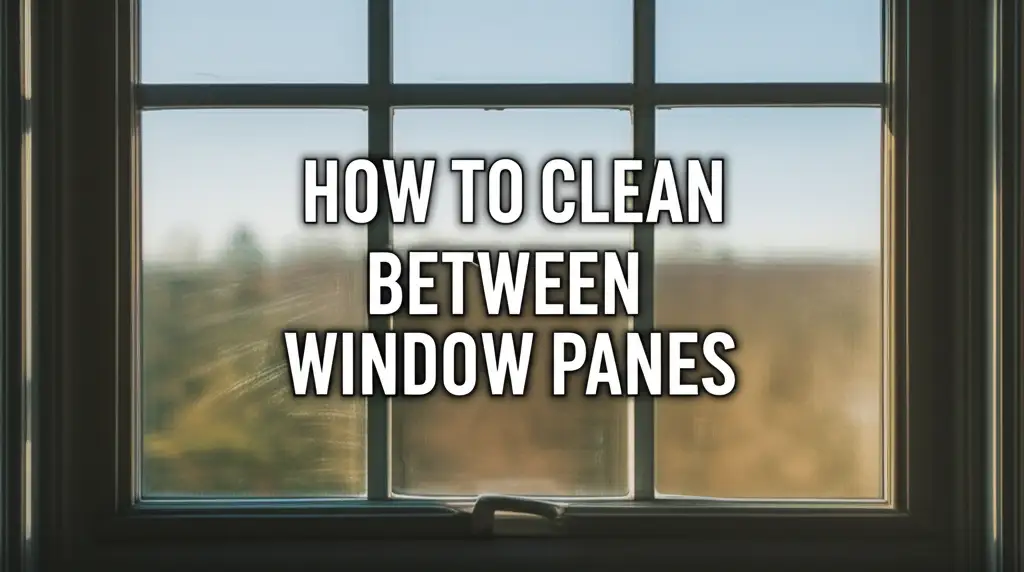· Home Maintenance · 17 min read
How To Clean Range Hood Filter

Deep Clean Your Range Hood Filter: A Complete Guide
Cooking smells linger, and your kitchen feels stuffy. You might notice grease buildup on nearby surfaces. A dirty range hood filter often causes these issues. This essential kitchen component works hard to remove smoke, steam, and grease from your cooking area. However, it collects all that grime over time. Learning how to clean range hood filter effectively is simple. It makes a big difference in your kitchen’s air quality and overall cleanliness.
In this guide, I will show you why cleaning your filter is important. We will explore different filter types. You will get clear instructions on the best cleaning methods. We will also cover essential safety tips and a maintenance schedule. Let’s make your kitchen cleaner and safer, starting with the heart of your ventilation system.
Takeaway
- Regularly clean metal mesh range hood filters using hot water and dish soap, baking soda and vinegar, or a dishwasher.
- Replace charcoal filters instead of cleaning them.
- Prioritize safety by disconnecting power and wearing gloves during the cleaning process.
- Maintain your range hood filter to ensure efficient air quality, reduce fire risks, and extend the appliance’s lifespan.
To clean a range hood filter, first remove it from the hood. Next, soak metal mesh filters in a solution of hot water and degreasing dish soap, baking soda, or a specialized cleaner. Scrub away grease with a brush, rinse thoroughly, and let it dry completely before reinstalling. Replace charcoal filters as they are not washable.
Why Cleaning Your Range Hood Filter Matters So Much
Your range hood filter works hard every time you cook. It captures grease, smoke, and odors from the air. Without regular cleaning, this filter becomes clogged. A clogged filter cannot do its job properly. This creates several problems for your kitchen and home.
A dirty filter reduces airflow. This means the range hood pulls less smoke and steam out of your kitchen. Cooking odors will linger longer. Grease and moisture will settle on your cabinets, walls, and other surfaces. This makes your whole kitchen feel greasy and unclean. My own kitchen once had a faint smell even when not cooking. I realized a very dirty filter was the cause. Cleaning it made an immediate difference.
Grease buildup on filters also poses a fire hazard. Accumulated grease is highly flammable. A spark from your stovetop could ignite it. This puts your home and family at risk. Many kitchen fires start this way. Regular filter cleaning is a simple fire prevention step. It protects your investment and ensures peace of mind.
Furthermore, a clean filter improves your range hood’s efficiency. The fan motor does not have to work as hard to pull air. This saves energy and extends the life of your appliance. A well-maintained filter also leads to cleaner air in your home. This benefits everyone, especially those with allergies or respiratory issues. Cleaning this filter is not just about aesthetics; it is about safety, efficiency, and comfort.
Understanding Different Range Hood Filter Types
Not all range hood filters are the same. Knowing your filter type helps you clean it correctly. Most residential range hoods use one of two main types: metal mesh filters or charcoal (carbon) filters. Some heavy-duty models use baffle filters. Each type requires a different approach to maintenance. You need to identify your filter before starting.
Metal mesh filters are the most common type. They consist of multiple layers of aluminum or stainless steel mesh. This mesh traps airborne grease particles. You can usually see them directly under your range hood. These filters are designed for regular cleaning and reuse. They are durable and can withstand various cleaning methods. If your filter looks like a woven metal screen, it is likely a metal mesh filter. My range hood uses these, and they are quite easy to maintain once you know how.
Charcoal or carbon filters are different. They absorb odors from the air. These are often found in ductless range hoods, which recirculate air back into the kitchen. Unlike metal mesh filters, charcoal filters cannot be cleaned. The carbon inside becomes saturated with odors and particles over time. Once saturated, they lose effectiveness. You must replace charcoal filters regularly. The replacement frequency depends on your cooking habits, usually every 3-6 months. Trying to wash them will ruin them and release trapped odors.
Baffle filters are found in some professional or higher-end residential range hoods. They are made of metal, usually stainless steel, and have a series of interlocking baffles or plates. These plates force air to change direction quickly, causing grease particles to condense and drip into collection trays. Baffle filters are very efficient at grease removal. They are also easy to clean, much like metal mesh filters, often being dishwasher safe. Identifying your filter type is the first step toward effective cleaning.
Gathering Your Tools: What You Need for Filter Cleaning
Before you begin to clean range hood filter, gather all necessary supplies. Having everything ready saves time and makes the process smoother. You probably have most of these items already in your kitchen or cleaning cabinet. Preparing ensures a safe and effective cleaning session.
First, you will need protective gear. I always wear rubber gloves. They protect your hands from grease and cleaning solutions. The grease can be surprisingly sticky and difficult to remove from skin. You might also want to wear old clothes. This prevents accidental stains from dirty water or degreaser. Safety goggles are a good idea too. They protect your eyes from splashes, especially if using strong cleaning agents.
Next, prepare your cleaning solutions. Hot water is essential for dissolving grease. Very hot tap water works well. For metal mesh filters, you will need a good degreasing dish soap. Brands known for cutting grease work best. Alternatively, you can use baking soda and white vinegar. This natural combination creates a powerful degreasing reaction. Some people prefer a specialized heavy-duty degreaser spray. Choose the method that suits your filter type and the level of grease buildup.
You will also need a large basin, sink, or even a bathtub to soak the filters. The basin must be big enough to fully submerge your filters. A non-abrasive scrubbing brush or an old toothbrush helps remove stubborn grease. A soft cloth or sponge is also useful for wiping down the filter frames. Finally, have old towels or newspapers ready. These protect your countertops from drips and provide a clean drying surface. Having these tools ready ensures an efficient cleaning process.
Step-by-Step Guide: How to Clean Metal Mesh Filters
Cleaning metal mesh range hood filters is straightforward. It requires patience but yields great results. Follow these steps to restore your filters to a clean, efficient state. Remember to perform this task regularly for best performance.
Step 1: Remove the Filters Safely
First, ensure your range hood is off. Disconnect power to the hood if possible. This prevents accidental starts. Most range hood filters have small latches, handles, or spring clips. Press or pull these to release the filter. Carefully slide the filter out of its slot. Be gentle to avoid bending the metal. The filters might be heavy with grease, so handle them carefully. Take them to your designated cleaning area, like a utility sink or a large basin. My filters usually pop out with a gentle pull on a small lever.
Step 2: Choose Your Cleaning Method
You have several effective options for cleaning metal mesh filters. The choice depends on the level of grease and your preference.
Cleaning Method 1: Hot Water & Dish Soap Soak
This method is perfect for regular cleaning or moderately greasy filters.
- Fill a large sink or basin with very hot water. Make it as hot as you can safely handle.
- Add a generous amount of degreasing dish soap to the hot water. I use about a quarter cup for a standard sink.
- Carefully submerge the dirty filters into the soapy water. Ensure they are fully covered.
- Let the filters soak for 15-30 minutes, or longer if the grease is very stubborn. The hot water and soap will loosen the grease.
- After soaking, use a non-abrasive brush or sponge to gently scrub away any remaining grease. Pay attention to the mesh holes.
- Rinse the filters thoroughly under hot running water. Ensure all soap residue is gone. You will see the water run clear when the filter is clean.
Cleaning Method 2: Baking Soda & Vinegar Power Soak
This natural combination works wonders on heavily greased filters.
- Boil a large pot of water on your stovetop. You can also use a kettle.
- Place your filters in a large sink or basin.
- Carefully pour the boiling water over the filters until they are fully submerged. Be very careful with hot water.
- Add half a cup of baking soda to the hot water. You will see fizzing. This reaction helps break down grease.
- Next, pour in about a quarter cup of white vinegar. The mixture will fizz and bubble even more vigorously. This is normal.
- Let the filters soak for at least 30 minutes, or up to an hour for very stubborn grease.
- After soaking, scrub the filters with a brush. Rinse them well under hot water until clean.
Cleaning Method 3: Dishwasher Cleaning (Check Compatibility First!)
This is the easiest method if your filters are dishwasher-safe.
- Check your range hood manual or look for a “dishwasher safe” symbol on the filter itself. Not all metal mesh filters are safe for dishwashers. Some may discolor or warp.
- Remove the filters from your range hood.
- Place the filters in the dishwasher, preferably in the bottom rack. Do not overcrowd the dishwasher. Make sure other dishes are not blocking water jets.
- Add your regular dishwasher detergent. For extra greasy filters, you can add a degreasing booster.
- Run a hot cycle, ideally with an extra rinse option. The hot water and detergent will cut through the grease.
- Once the cycle finishes, remove the filters. They should be sparkling clean. This method works well for me when I clean my kitchen thoroughly. It’s similar to how one might clean other household filters, like when you clean air conditioner filter components or even clean a hot tub filter with dishwasher detergent (if compatible).
Step 3: Dry and Reinstall
After cleaning and rinsing, allow the filters to dry completely. You can air-dry them on a clean towel or paper towels. Make sure they are bone dry before reinstalling. Water left on the filter can cause rust or electrical issues. Once dry, carefully slide the filters back into their slots. Secure the latches or clips. Turn the power back on to your range hood. Your range hood is now ready to pull clean air again. This regular cleaning greatly improves your kitchen’s air quality, just like maintaining a clean window AC unit filter improves indoor air.
Dealing with Charcoal Filters: Replacement, Not Cleaning
Charcoal, or activated carbon, filters are essential for ductless range hoods. They remove odors and some airborne particles by adsorption. Adsorption is a process where molecules stick to the surface of the carbon. Unlike metal mesh filters, charcoal filters are not designed for cleaning. Trying to wash them will damage their structure. It will also release the trapped odors and particles back into the air. This makes the filter useless.
When a charcoal filter becomes saturated, it loses its ability to absorb odors. You will notice cooking smells lingering longer in your kitchen. This is a clear sign that the filter needs replacement. The lifespan of a charcoal filter depends on how often you cook. It also depends on the types of food you prepare. Heavy cooking, especially fried foods, saturates filters faster. Most manufacturers recommend replacing charcoal filters every 3 to 6 months. Always check your range hood’s manual for specific recommendations.
Replacing a charcoal filter is a simple process. First, ensure your range hood is turned off. Some models require you to remove the metal mesh filters first to access the charcoal filter. Charcoal filters often clip into place around the fan motor or within a housing. Unclip the old, saturated filter. Dispose of it properly. Then, unwrap the new charcoal filter. Carefully align it and clip it into position. Ensure it sits securely. Reinstall any metal mesh filters you removed. This quick replacement maintains your range hood’s odor-removing capability. Regular replacement ensures your kitchen remains fresh. It also helps your range hood work efficiently. This is similar to the process of replacing a water filter in your fridge when it reaches the end of its life.
Advanced Tips for Stubborn Grease & Maintenance Schedule
Sometimes, grease on your range hood filters can be extremely stubborn. Regular cleaning helps prevent this, but old, baked-on grease requires more effort. You can use several advanced tips to tackle these tough spots. A consistent maintenance schedule also ensures your filters stay cleaner for longer. This reduces the need for heavy-duty cleaning sessions.
For truly stubborn grease, consider using a dedicated commercial degreaser. These products are formulated to break down heavy grease efficiently. Always read the product instructions carefully. Ensure the degreaser is safe for your filter material. Spray the degreaser onto the dry filter. Let it sit for the recommended time. Then, scrub vigorously with a stiff brush. Rinse thoroughly with hot water. Always wear gloves and eye protection when using strong chemicals.
Another trick for very tough spots is to use a steam cleaner. The high heat and steam can melt and loosen hardened grease. Direct the steam nozzle onto the greasy areas. Wipe away the dissolved grease with a cloth. Be careful not to burn yourself with the hot steam. You can also try combining methods. For instance, pre-soak the filters in hot soapy water overnight. Then, use the baking soda and vinegar method the next morning. This double-attack approach often works wonders on accumulated grime.
Establishing a regular cleaning schedule is key to preventing stubborn buildup. For average cooking, I recommend cleaning your metal mesh filters every 3-4 weeks. If you cook frequently, especially fried or greasy foods, clean them every 1-2 weeks. Mark it on your calendar or set a reminder. This proactive approach prevents grease from hardening. It also ensures your range hood always performs its best. My personal routine includes cleaning the filters every two weeks. This keeps them from getting too dirty. For charcoal filters, replace them every 3-6 months. Pay attention to signs like lingering odors. This consistent maintenance keeps your kitchen air fresh and your appliance working efficiently. It is as important as routine cleaning for other home filters, such as knowing how to clean an under sink water filter for clean drinking water.
Safety First: Essential Precautions During Filter Cleaning
Cleaning a range hood filter involves dealing with electricity, hot water, and cleaning chemicals. Prioritizing safety prevents accidents and injuries. Always take necessary precautions before and during the cleaning process. Your well-being is more important than a clean filter.
First and foremost, disconnect the power to your range hood. Before touching the filters, unplug the hood if it has a cord. If it is hardwired, flip the circuit breaker that controls the range hood. This prevents the fan from accidentally turning on while you are removing or reinstalling filters. Accidental fan activation can cause serious finger injuries. I always make sure the power is off first; it’s a non-negotiable step.
Wear appropriate personal protective equipment (PPE). Rubber gloves are essential. They protect your hands from harsh degreasers and the greasy grime. Old grease can be sharp or contain small metal fragments. Gloves also prevent skin irritation from cleaning solutions. If you are using strong chemical degreasers or boiling water, wear safety goggles. Splashes can happen unexpectedly. Eye protection prevents chemical burns or scalding.
Work in a well-ventilated area. If using strong chemical degreasers, open windows and doors. This prevents inhaling fumes, which can irritate your respiratory system. Ensure the space has good air circulation. If possible, clean the filters outdoors or in a utility room. When handling hot water, be extra careful. Use sturdy gloves. Pour boiling water slowly and carefully. Avoid splashing hot water onto yourself or others. A large basin that can hold all the water without overflowing is a good idea.
Finally, ensure the filters are completely cool before handling them. If you just finished cooking, the filters will be hot. Let them cool down to room temperature. This prevents burns. After cleaning, ensure the filters are bone dry before reinstalling. Moisture can lead to rust or even electrical short circuits when power is restored. Following these safety guidelines ensures a smooth, risk-free cleaning experience. Your safety should always be your top concern.
FAQ Section
How often should I clean my range hood filter?
You should clean metal mesh range hood filters every 3-4 weeks for average cooking habits. If you cook frequently or prepare greasy foods, clean them every 1-2 weeks. Charcoal filters need replacement every 3-6 months, not cleaning. Consistent cleaning prevents heavy grease buildup and maintains air quality.
Can I put my range hood filter in the dishwasher?
Many metal mesh range hood filters are dishwasher safe. Check your range hood manual or look for a dishwasher-safe symbol on the filter itself. Do not put charcoal filters in the dishwasher; they are not washable. Always use a hot cycle and ensure filters dry completely before reinstallation.
What should I do if grease won’t come off my filter?
For stubborn grease, try a longer soak in very hot water with a strong degreasing dish soap, baking soda, and vinegar. You can also use a specialized commercial degreaser. Apply the degreaser, let it sit, then scrub with a stiff brush. Steam cleaners can also help loosen tough grime.
Do all range hood filters need cleaning?
No, not all range hood filters need cleaning. Metal mesh filters are designed for regular cleaning and reuse. However, charcoal (carbon) filters, found in ductless range hoods, are not washable. They absorb odors and must be replaced every few months when they become saturated.
Is it okay to use abrasive cleaners or brushes on my range hood filter?
Avoid using abrasive cleaners, steel wool, or harsh scrubbing brushes on metal mesh filters. These can scratch or damage the filter’s surface, reducing its effectiveness and potentially leading to rust. Stick to soft brushes, sponges, or cloths. Always use non-abrasive cleaning agents.
How do I know if my charcoal filter needs replacement?
You will notice cooking odors lingering in your kitchen even after using the range hood. This is the main sign that your charcoal filter is saturated and no longer absorbing smells effectively. Some range hoods have indicator lights for filter replacement as well.
Conclusion
Cleaning your range hood filter is a vital task for any home chef. It is more than just keeping things looking good. A clean filter ensures fresh kitchen air. It improves your range hood’s efficiency. Most importantly, it significantly reduces the risk of kitchen fires caused by grease buildup. My own experience taught me the immediate benefits of this simple maintenance.
You now understand the different types of filters and the best methods to clean range hood filter effectively. Whether you use a hot water and soap soak, the powerful baking soda and vinegar combination, or even your dishwasher for compatible filters, regular cleaning makes a huge difference. Remember to always prioritize safety. Disconnect power, wear gloves, and ensure good ventilation. This approach protects you and your appliance.
Make filter cleaning a regular part of your kitchen maintenance routine. Mark it on your calendar. This simple act keeps your cooking space safer, cleaner, and more enjoyable for everyone. A well-maintained range hood works quietly and efficiently. It ensures your kitchen remains the heart of your home, without the lingering smells or dangerous grease. Take the step today to clean your range hood filter and enjoy a cleaner, safer kitchen environment.
- range hood
- filter cleaning
- kitchen cleaning
- grease removal
- home maintenance




